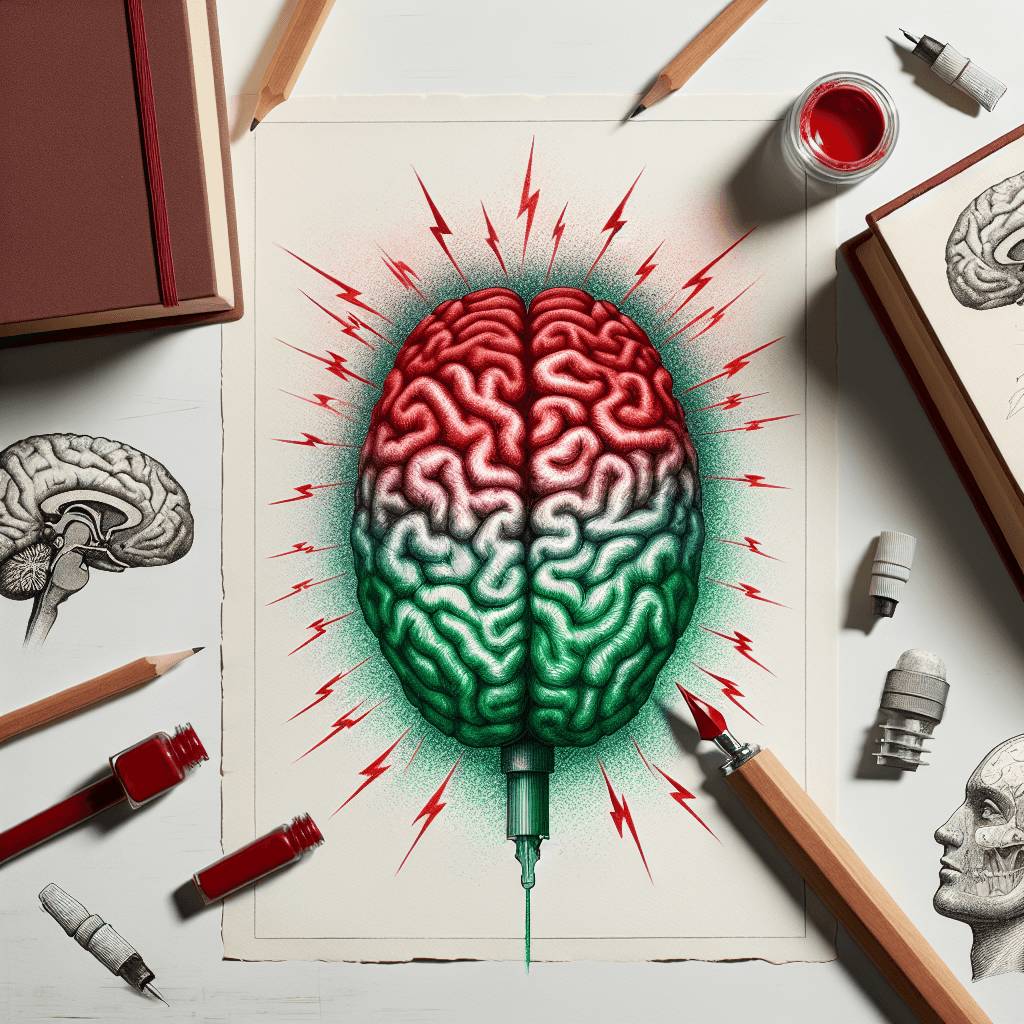Why does reading the word GREEN written in red ink short-circuit your brain
It's a simple test that creates an instant traffic jam in your brain, pitting what you *read* against what you *see*. We'll uncover the science behind this cognitive clash and why one part of your brain almost always wins the fight.


Too Long; Didn't Read
Your brain reads the word GREEN automatically, but has to work harder to identify the ink color red. This conflict between an automatic process and a controlled one causes a mental traffic jam, slowing down your response time.
The Stroop Effect Explained: Why Does Reading the Word GREEN Written in Red Ink Short-Circuit Your Brain?
Try this quick experiment. Look at the word below and, as fast as you can, say the color of the ink it’s written in, not the word itself.
BLUE
Did you hesitate? Did your brain trip over itself for a split second, wanting to say "blue" before correcting to "red"? This momentary mental hiccup isn't a sign of confusion; it's a famous psychological phenomenon that reveals the fascinating, and sometimes conflicting, inner workings of your mind. This cognitive puzzle is known as the Stroop Effect, and it perfectly demonstrates the battle between two different tasks our brains try to perform simultaneously. This post will break down the science behind this "short-circuit" and explain why such a simple task can be surprisingly difficult.
What is the Stroop Effect?
First described by psychologist John Ridley Stroop in the 1930s, the Stroop Effect is a classic demonstration of cognitive interference. In his experiments, Stroop found that when the name of a color is printed in a different color's ink, it causes a significant delay in our ability to name the ink color.
Participants in his studies were much faster and more accurate when the tasks were congruent (the word RED printed in red ink) than when they were incongruent (the word RED printed in green ink). That delay—the extra time your brain needs to resolve the conflict and state the correct ink color—is the essence of the Stroop Effect. It’s a powerful tool used by researchers to measure a person's selective attention, processing speed, and cognitive flexibility.
The Brain's Internal Conflict: Automatic vs. Controlled Processing
The reason your brain stumbles lies in the conflict between two different types of cognitive processes: automatic processing and controlled processing.
- Automatic Processing: For any literate adult, reading is an automatic, deeply ingrained skill. After years of practice, you don't have to consciously think about sounding out letters to form a word. You see the word "green," and your brain processes its meaning instantly and effortlessly, whether you want it to or not.
- Controlled Processing: Naming the color of the ink, on the other hand, is a controlled process. It is a less practiced task that requires more conscious effort and attention. You have to actively look at the word, identify its visual properties (the color), and then verbalize it.
When you see the word GREEN written in red ink, these two processes clash. Your brain’s automatic, lightning-fast reading skill processes the meaning of the word "GREEN" before your more deliberate, controlled process has a chance to identify the ink color as "red." This creates a traffic jam of information, and your brain has to actively suppress the wrong answer (the word) to focus on the right one (the color). This extra mental work is what causes the hesitation and the feeling of a mental "short-circuit."
Why Reading Almost Always Wins the Race
The primary reason for this cognitive interference is the sheer automaticity of reading. Think of the neural pathways in your brain as roads. The pathway for reading is a multi-lane, well-paved superhighway built over years of daily use. The pathway for naming a color is more like a quiet country road—perfectly functional, but much slower. When presented with both stimuli at once, your brain’s default is to speed down the familiar highway of reading.
According to theories of selective attention, successfully naming the ink color requires you to apply extra mental energy to ignore the more powerful, automatic impulse to read the word. You have to consciously direct your attention away from the word's meaning and focus solely on its physical attribute—its color.
Conclusion
So, why does reading the word GREEN written in red ink feel so strange? It’s because you are witnessing a direct conflict between your brain's highly efficient, automatic reading system and its more deliberate, attention-driven color-naming system. The automatic process of reading is so powerful that it interferes with your ability to complete the less-practiced task of identifying the color.
The Stroop Effect is more than just a fun brain teaser; it’s a powerful window into how our minds handle attention, process conflicting information, and manage tasks. The next time you find yourself pausing on a mismatched color word, take a moment to appreciate the fascinating cognitive battle happening inside your head. It’s not a glitch; it’s a feature of a brain that has become incredibly good at one of humanity's most important skills: reading.
More Articles

Why do we feel an urge to touch a surface that has a wet paint sign?
That irresistible urge to touch the wet paint isn't a lack of self-control; it's a fascinating psychological battle between obedience and your brain's deep-seated need to test reality for itself.

How does a simple glow stick produce light without batteries or heat?
It's not magic, it's a brilliant chemical reaction trapped in a tube; discover how that satisfying 'snap' unleashes a cascade of cold light without a single spark or battery.

Why were teenage boys a disaster as the first telephone operators?
They were hired for their experience with telegraphy, but their legendary pranks, foul-mouthed shouting matches, and on-the-job wrestling quickly made way for a new type of operator.